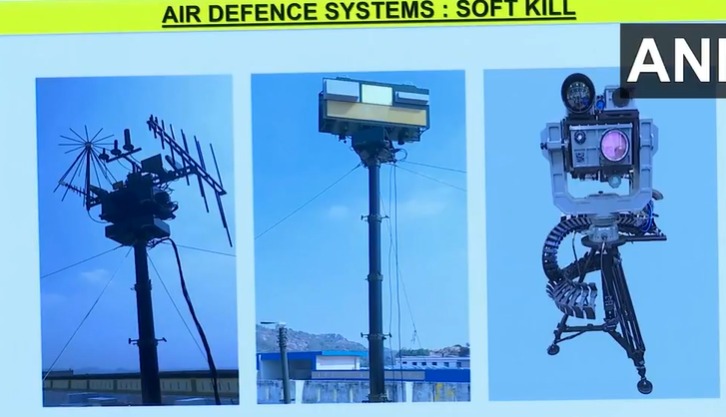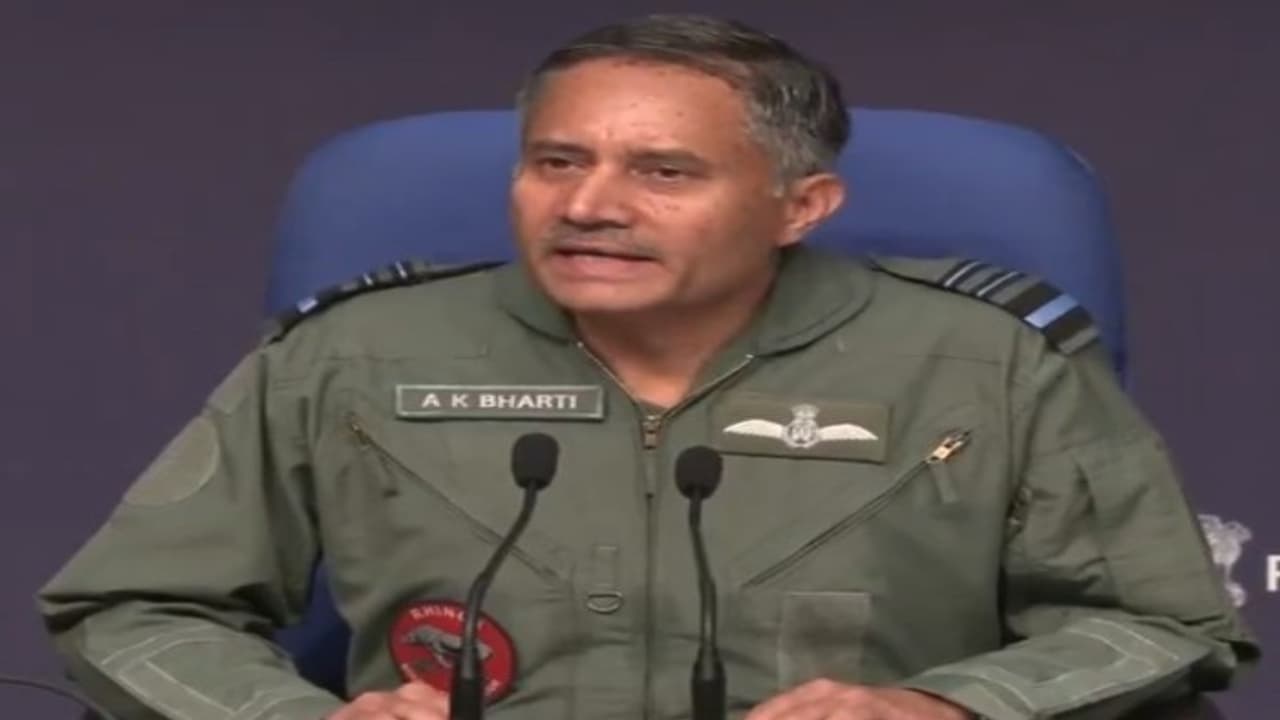Indian military revealed how its indigenous, multi-layered air defence systems, including Akash missiles and anti-drone tech, thwarted Pakistani attacks during Operation Sindoor while enabling precision strikes across Pakistan terror infrastructure.
In a special tri-service press briefing on Sunday, India’s top military leadership laid bare the scale and sophistication of Operation Sindoor — India’s retaliatory strikes following Pakistan’s terror-linked provocations. With targeted assaults across Pakistan’s geography, Air Marshal AK Bharti, Director General Air Operations, said the Indian Air Force, Army and Navy operated in a seamless, integrated command environment to neutralise terror hubs and thwart Pakistani military offensives.

“Our fight was against terrorists and their infrastructure, not against the Pakistani military,” said Air Marshal Bharti. “However, it is a pity that the Pakistan military chose to bat for terrorists, which compelled us to respond in kind.”
He presented a composite visual grid of targets engaged by the Indian Air Force and underscored how India’s multi-layered air defence (AD) network protected its own infrastructure while executing deep precision strikes across Pakistan — from Muridke in Punjab to Skardu in Gilgit-Baltistan.
Integrated Air Defence at work
In a detailed tri-services briefing on Operation Sindoor, India showcased how its integrated air defence (AD) systems neutralised waves of Pakistani drones, missiles, and aerial threats with precision and coordination. The briefing, led by DG Air Operations Air Marshal AK Bharti, offered the clearest picture yet of how India’s military shield protected both civilian and strategic assets across the country.
Air Marshal Bharti underscored that it was India’s layered and integrated AD network—featuring sensors, weapon systems, and real-time coordination between the Army, Navy, and Air Force—that made the difference. Central to this was the Integrated Air Command and Control System (IACCS), which stitched together the various platforms into a seamless defensive grid.
“Despite Pakistan’s unrelenting efforts, we managed to prevent large-scale damage to both civilian and military infrastructure,” Bharti said. “The multi-layered AD system includes indigenous soft and hard-kill counter-drone systems, coordinated responses, and highly trained personnel. The IACCS played a pivotal role in this.”
The Indian Air Force (IAF) was able to intercept and neutralise several drones, loitering munitions, long-range rockets, and a Chinese-origin PL-15 air-to-air missile, the debris of which has been recovered. Pakistan’s use of unmanned combat aerial vehicles (UCAVs) was also countered by India's battle-proven and home-grown platforms.
One of the standout systems, Bharti noted, was the Akash surface-to-air missile system, which proved particularly effective in engaging multiple aerial threats.
“The stellar performance of indigenous systems like Akash shows the strength of India’s defence R&D. It is thanks to consistent government support over the last decade that we could field such a potent AD environment,” he said.
Bharti explained how India’s integrated air command and control system successfully fended off Pakistani air and drone offensives.
“Numerous waves of drones and unmanned combat aerial vehicles were launched by Pakistan but were thwarted by indigenously developed soft and hard kill counter-UAS systems,” he said, crediting the effort to India’s well-trained air defence personnel across services.
The Indian Armed Forces deployed a layered and robust AD system, composed of:
- Akash surface-to-air missile systems (indigenous)
- Barak-8 (MR-SAM) jointly developed with Israel
- Spyder and Pechora missile systems
- RADAR networks including Swathi weapon-locating radars
- Counter-drone systems, both kinetic and jamming-based
- SAMAR and other quick-reaction systems for close-range threats

“Our battle-proven systems stood the test of time. One of the highlights has been the stellar performance of the Akash system — a fully indigenous weapon that played a pivotal role,” Bharti noted.
Government push enabled readiness
The Air Marshal said that the preparedness and performance of Indian AD systems were the result of sustained investment and strategic planning. “Putting together and operationalising this potent environment has only been possible due to strong budgetary and policy support from the Government of India in the last decade.”
India’s multi-domain coordination ensured minimal civilian or infrastructure damage even as Pakistan attempted a wide-ranging retaliation using drones, UCAVs, and even ballistic missile threats.
During the briefing, the military also displayed debris of a Pakistani Mirage aircraft downed during the operation, a visual demonstration of India’s air superiority and intercept capabilities.
Also present at the briefing were DG Military Operations Lt Gen Rajeev Ghai and DG Naval Operations Vice Admiral A N Pramod, underlining the joint operational nature of India’s defence posture during the conflict.
The comprehensive demonstration of air defence capabilities signals a shift in India’s strategic messaging: it can now not only launch precision strikes across the border but also absorb and repel complex, multi-domain attacks with discipline and coordination.
The briefing made it clear: Operation Sindoor was not just about hitting terror havens, it was also a showcase of how India’s indigenised defence architecture is now combat-proven across all levels of engagement.
-With ANI inputs


